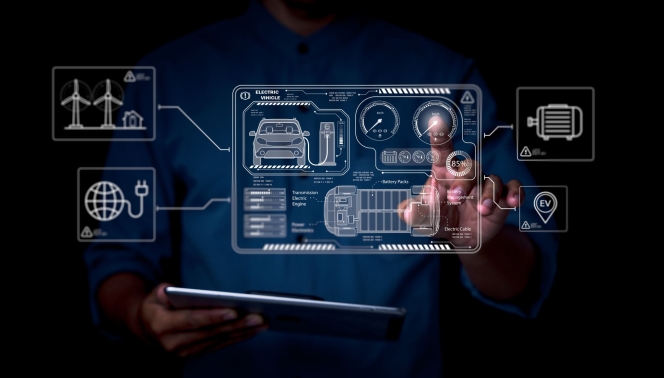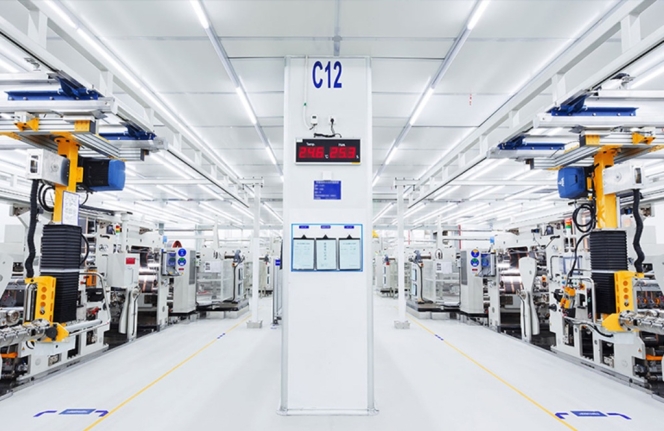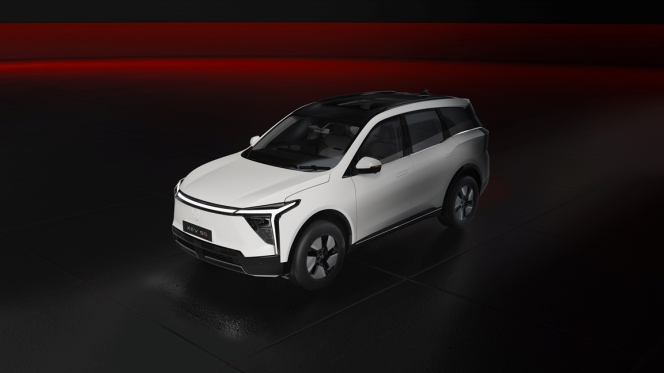Electric Vehicles: Driving India's Last Mile Connectivity for Economic Growth
- By Dr. Darshan Rana, Chairman & MD, Rana Group
- August 08, 2023

“Rural India is the real India,” this statement holds a profound truth. While urban centres may dominate the narrative of progress and development, it is in rural India where the heart and soul of the nation reside. But for any country to progress, connectivity with rural regions, especially the last mile connectivity is an absolute must. And electric vehicles are driving India’s last mile connectivity and contributing to the nation’s economic growth.
There is no debate that EVs offer a viable alternative, bringing numerous benefits such as reduced emissions, lower operational costs, and improved energy efficiency. Through this article I would like to highlight six critical factors which will contribute to EVs becoming the driving force in India’s last mile connectivity.
Cost of Ownership- a strong ruling factor:
One significant advantage of EVs is their lower cost of ownership compared to traditional internal combustion engine (ICE) vehicles. While the initial purchase price of EVs may be higher, the operational and maintenance costs are considerably lower. EVs have fewer moving parts and require less frequent servicing, resulting in reduced maintenance expenses. Moreover, the cost of charging an EV is substantially lower than the price of fossil fuels, contributing to long-term savings. As EV technology continues to advance, economies of scale and improved battery technology are expected to further drive down the cost of ownership, making EVs an attractive choice for last mile connectivity in India.
The world of E-commerce- Driving EV adoption in full scale:
It is estimated that the B2C e-commerce market in India is expected to reach $ 107.3 billion in 2023. The exponential growth of e-commerce in India has heightened the demand for efficient last mile connectivity solutions. With the surge in online shopping, delivery vehicles have become a ubiquitous presence in urban areas. Recognizing the need for sustainable transportation options, e-commerce companies are increasingly adopting EVs for their logistics operations. This trend not only promotes eco-friendly practices but also contributes to the wider adoption of EVs by raising awareness and creating a market for electric commercial vehicles. The symbiotic relationship between e-commerce and EVs presents a significant opportunity to accelerate the transition to clean and efficient mobility in India.
Government Policies – Creating impactful solutions:
The Indian government has been instrumental in driving the adoption of EVs through various policy measures. Since 2011 when the GOI formed the National Council for Electric Mobility who was tasked to make recommendations to promote e-mobility & manufacturing of EVs, initiatives such as FAMEscheme provide financial incentives and subsidies to both manufacturers and consumers, making EVs more affordable. The government has also implemented ambitious targets for EV adoption and aims to electrify a significant portion of the public transportation system. Additionally, favourable policies, such as exemption from certain taxes and tolls, encourage individuals and organizations to embrace EVs.
OEM Impact on EV ecosystem- a critical role:
Original Equipment Manufacturers (OEMs) play a pivotal role in shaping the EV ecosystem in India. Several automotive companies have entered the EV market, offering a diverse range of electric vehicles to cater to different segments and requirements. OEMs are investing in research and development to improve battery technology, enhance vehicle performance, and extend the driving range. Furthermore, collaborations with battery manufacturers and charging infrastructure providers are essential to ensure seamless integration and sustainable growth of the EV ecosystem. The competitive landscape is driving innovation, affordability, and improved consumer choices, further bolstering India's last mile connectivity through EVs.
Public & Private sector collaborations- a symbiotic relationship:
The metro rail connectivity is considered to be one of the finest examples of a healthy PPP project in India. In the same lines, the successful transition to electric mobility requires collaborations between the public and private sectors. Public entities, such as municipal corporations and transportation authorities, can facilitate the deployment of EV charging infrastructure and provide incentives for fleet electrification. Partnerships between EV manufacturers, utility companies, and charging infrastructure providers are vital to establishing a robust charging network across the country. Furthermore, knowledge-sharing platforms, industry associations, and research institutions can foster collaboration and exchange best practices to overcome challenges and expedite EV adoption.
Tracking and Analysis of EV Adoption – the role of data:
To ensure the successful implementation of EVs in India's last mile connectivity, tracking and analysis of EV adoption are crucial. Data-driven insights on charging patterns, driving habits, and infrastructure requirements enable stakeholders to make informed decisions and identify barriers and opportunities, refine policies, and allocate resources effectively. Real-time monitoring of charging stations and vehicle performance ensures reliable operation and user satisfaction. Additionally, comprehensive analysis can facilitate targeted interventions, such as incentives for specific regions or sectors, and inform future infrastructure planning. Continuous tracking and analysis contribute to an efficient and optimized EV ecosystem.
A region's mobility is influenced by three key factors: people, infrastructure, and sustainability. These elements determine how well transportation functions within the city. Understanding the needs and behaviors of residents is crucial in designing effective transportation systems, because this in turn will impact the economic development of the region. Infrastructure, including roads, public transit, and pedestrian walkways, plays a vital role in facilitating smooth movement. Importantly, prioritizing sustainable options like electric vehicles and promoting active transportation helps create a greener and more efficient urban environment, with focus on last mile connectivity.
Trinseo Launches Fourth-Generation Binder For The Next Wave Of EV Batteries
- By MT Bureau
- December 03, 2025

Trinseo has introduced its latest innovation, the Fourth-Generation SBR Binder Platform, designed to meet the evolving demands of electric vehicles and battery energy storage systems. This development reflects the company's strategic focus on delivering high-performance materials essential for the global shift towards sustainable energy.
The platform results from advanced polymer science and collaboration with battery manufacturers, targeting key industry requirements such as increased energy density, superior durability and more efficient production. It provides a significant improvement in peel strength, enabling stronger electrode bonds, thicker coatings and higher manufacturing speeds. These attributes are vital for developing higher-capacity batteries that can extend driving range and improve storage solutions.
The inaugural product, VOLTABOND 109 Latex Binder, offers this next-generation performance with broad compatibility across various anode materials and manufacturing processes. Its design ensures excellent stability and low resistance, supporting faster charging and long-term reliability. To ensure robust supply, Trinseo will produce the platform locally within major global regions, enhancing responsiveness to battery production hubs.
Rooted in decades of expertise, this new platform establishes a foundation for future innovations tailored to diverse customer needs across the battery value chain.
CATL And Stellantis Begin Work On EUR 4.1 Billion Spanish Battery Plant
- By MT Bureau
- November 28, 2025

CATL and Stellantis broke ground on a EUR 4.1 billion battery plant in Figueruelas, Spain, on 26 November. The 50:50 joint venture will produce lithium-iron-phosphate battery cells and targets an annual production capacity of 50 GW/h.
The project, which is Spain’s largest battery factory, is backed by over EUR 300 million in EU funds, with production expected to start in late 2026.
According to unions, around 2,000 Chinese workers will help construct the site, a point of contention with local authorities and residents. Also, 3,000 Spanish staff are to be hired and trained later.
Spanish authorities and residents have voiced concerns about job opportunities for local workers and potential strain from the influx of foreign employees. CATL Vice President Meng Xiangfeng said earlier in November the company needed experienced technicians to build and fine-tune production lines, with plans to train local workers to take over operations gradually.
David Romeral, Director General of CAAR Aragon, a network of automotive businesses in the region, said: “We don’t know this technology, these components – we’ve never made them before. They’re years ahead of us. All we can do is watch and learn.”
The regional government is organising work permits for arriving workers while seeking to attract battery supply chain companies to Aragon. Some Chinese technicians and managers have already arrived, with several hundred more expected by year-end and nearly 2,000 by the end of next year.
CATL’s approach contrasts with its Hungarian site in Debrecen, where it hired mostly locals to build its European plant. However, a lack of local workers caused production to be delayed from late 2025 into mid-2026. The Figueruelas facility will serve as CATL’s third European manufacturing operation, alongside the Hungarian plant and one in Germany.
- Neuron Energy
- Equanimity Ventures
- Rajiv Dadlani Group
- Thackersay Family Office
- Chona Family Office
- Pratik Kamdar
- Rajesh Sehgal
- Rajiv Dadlani
Neuron Energy Secures INR 310 Million To Expand EV Battery Manufacturing For Four-Wheelers & Buses
- By MT Bureau
- November 27, 2025

Neuron Energy, an EV battery manufacturer, has raised INR 310 million in a Pre-Series B funding round led by Equanimity Ventures, Rajiv Dadlani Group, Thackersay Family Office and Chona Family Office, with participation from Family Offices and HNI investors. With this, Neuron Energy has raised INR 810 million to date.
The funding will be used to expand Neuron Energy’s manufacturing capacity to 3 GWh and to establish a fully automated, large-scale battery facility for electric four-wheelers and buses at Chakan, Pune. The capital will also strengthen the company’s R&D capabilities, accelerate domestic growth, and broaden its footprint in international markets.
Pratik Kamdar, CEO and Co-Founder, Neuron Energy, said, “This Pre-Series B round is a defining step in our mission to industrialise world-class battery manufacturing in India. As EV adoption accelerates, we are focused on building capacity, embedding automation, and pushing the boundaries of performance and reliability. This investment ensures we can deliver at scale, both in India and globally.”
The company said it operates with a low-CapEx and low-OpEx business model. It has been growing profitably year-on-year and is on track to achieve INR 2 billion in revenue this year. The company is also confident of achieving sales of over INR 9 billion, with profitability, over the next few years.
Rajesh Sehgal of Equanimity Ventures, added, "We see immense potential in Neuron Energy’s approach to EV battery innovation and scalability. Their focus on quality, automation, and energy efficiency aligns with the evolving demands of the EV industry in India and beyond. We are proud to support their next phase of growth as they scale into new vehicle categories and manufacturing capacities."
The new facility reinforces the company’s position in two-wheeler EV batteries and signals a strategic entry into heavier vehicle segments. This supports Neuron’s vision to become a comprehensive EV battery solutions provider.
Rajiv Dadlani, from the Family Office of the Rajiv Dadlani Group, said, "Neuron Energy demonstrates remarkable potential to become the market leader, with their renewed focus, in delivering top-quality products. The company and its founders are highly committed to delivering rigorously tested and safe-to-use Li-Ion smart batteries. We are confident that they will continue to thrive and set new standards in the industry."
Mahindra Intros XEV 9S Electric 7-Seater SUV At INR 1.99 Million, Deliveries From 23 January
- By MT Bureau
- November 27, 2025

Mahindra has launched the XEV 9S, an electric 7-seater SUV built on the INGLO platform, with prices starting at INR 1.99 million (ex-showroom). The XEV 9S is powered by MAIA, described as India’s fastest automotive mind.
The EV comes with a 70 kWh battery, delivering a power of 180 kW and 380 Nm of torque. It offers a claimed real-world range of 500 km from its LFP battery, which comes with a Lifetime Warranty. The SUV is stated to be the fastest 7-seater in its class, reaching zero to 100 kmph in 7.0 seconds, with a 202 kmph top speed.
The fully-loaded Pack Three Above 79 kWh variant is priced at INR 2.94 million ex-showroom with bookings open on 14 January 2026 and deliveries starting on 23 January 2026.
R Velusamy, President - Automotive Business, Mahindra & Mahindra and Managing Director, Mahindra Electric Automobile, said, “We have always believed that technology is meaningful only when it expands human possibility. The XEV 9S built on the INGLO electric origin platform does exactly that by creatin space – more than anyone else and gives a smooth and noise free ride. THE MAIA brain enables many of its high-tech features, making it the most advanced offering for its price.”
Nalinikanth Gollagunta, Chief Executive Officer - Automotive Division, Mahindra & Mahindra and Executive Director, Mahindra Electric Automobile, said, “The future of Indian mobility will belong to brands that don’t just electrify vehicles, but reimagine categories. With the XEV 9S, we’re not just playing in the EV segment, we’re expanding it. This SUV signals the start of a BIG new electric era for Mahindra - one built on scale, on purpose, and on a deep understanding of how India moves. The attractive prices starting at ₹ 19.95 Lakh make a very high-tech product accessible, with bookings opening on Jan 14 and deliveries start on Jan 23.”
The XEV 9S is an expression of Mahindra’s Heartcore Design philosophy, featuring a stance, lines, a gloss finish and interiors. The vehicle is designed to be silent on wheels.
Key highlights include:
- Space: Offers 4,076-litre of cabin space (for front and second row), boot space up to 527-litre and 150-litre of Frunk space. The third-row features 50:50 split seats.
- Suspension: Features Intelligent Adaptive dampers with i-Link at the front and 5-Link independent suspension at the rear.
- Driver Aids: Includes L2+ ADAS with five Radars and one Vision Camera, Driver Drowsiness Detection with DOMS (Eyedentity) and Secure360 Pro for live view and recording.
- Interior Comfort: Features Powered Boss Mode, ventilated second row seats, recline and sliding adjustment, sunshade for second row windows, Acoustic ‘Laminated’ Glass and wireless phone charging.
- Technology: Equipped with Brake by Wire with IEB, High Power Steering with VGR, VisionX – AR HUD, AutoPark Assist, and 140 features including Digital Key, NFC and Charge Scheduler.
- Entertainment: Includes a 16-Speaker Harman Kardon Audio system with Dolby Atmos, three 31.24 cm screens, 5G Connectivity and Fun & Work Apps.
- Efficiency: Running costs are INR 1.2 per km, with maintenance costs of INR 40 paise per kilometre and negligible road tax. Business owners benefit from 40 percent depreciation.
Pratap Bose, Chief Design & Creative Officer - Auto & Farm Sectors, Mahindra & Mahindra, said, “Designing the XEV 9S wasn’t about adding lines to a surface, it was about shaping a feeling. We wanted it to feel like stepping into a personal sanctuary, yet one that carries the pulse of modern India. Electric gave us the canvas; INGLO gave us the freedom to sculpt light, space and comfort. The result is an SUV that wears its size with grace and its technology with humility. It’s expressive, it’s calm, and it’s unmistakably Mahindra - built for a nation whose aspirations are only getting bigger.”






Comments (0)
ADD COMMENT